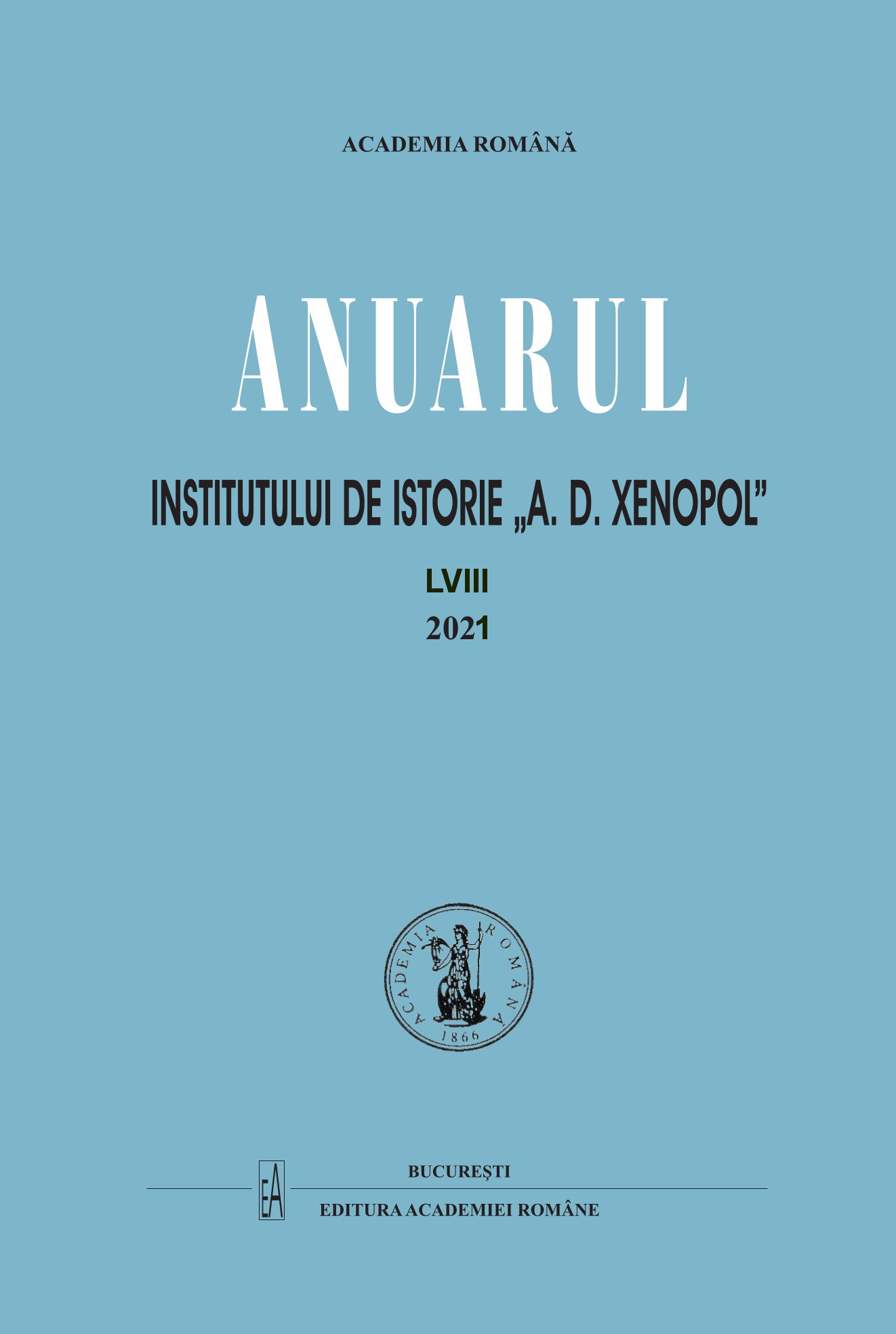BISERICA ȘI PAROHIA SFÂNTUL APOSTOL ANDREI DIN IAȘI ÎN SECOLUL AL XIX-LEA: STUDIU DE ISTORIE SOCIALĂ ȘI INSTITUȚIONALĂ
ST. ANDREW’S CHURCH AND PARISH OF IAȘI AT THE END OF THE 19th CENTURY: A STUDY OF SOCIAL AND INSTITUTIONAL HISTORY
Author(s): Mihai MîrzaSubject(s): Economic history, Local History / Microhistory, Social history, 19th Century
Published by: Editura Academiei Române
Keywords: church; St. Andrew; Iași; foundation; parish; secularization;
Summary/Abstract: St. Andrew’s Church was built in the Lower Feredeu neighbourhood, somewhere between Ulița Podului Lung (Long Bridge Street) and the Bahlui riverbed on the spot of the former Princely Court barn. Its appearance was favoured by the Princely Court moving to Copou as a result of the December 1784 fire, which vacated the former premises of the barn, and the increasing number of neighbourhood inhabitants in the context of the swift rise in the Iași population in the second half of the eighteenth century. It is one of the many parish churches appearing in the liminal areas of Iași at the cusp of the eighteenth and nineteenth centuries. The premises of the formation of a self-standing parish were set thus in a place that had been, up to then, avoided by the inhabitants of Iași due to the proximity of Bahlui waters and the unpleasant smells stemming from the waste from the Princely Court stables dumped nearby. The church founders were the sakellarios priest Ioan Buciumașul and a group of merchants, led by a certain Neculai. The priest was related to one or perhaps several of them. The church was made of stone, with a wooden roof and bell tower on top, covered in iron or copper plates. It was of modest size and quite austere in appearance. Works started in the autumn of 1794 or the spring of the following year and took two or three years. It withstood the 1802 earthquake and the pillaging of Ottoman soldiers in the summer of 1821, as well as the frequent floodings of Bahlui river during heavy rainfall years. St. Andrew’s Church had a wide yard of approximately 5,000 square metres, the site of a cemetery until the second half of the nineteenth century and of several houses. Some of these were used by the clergy, others were rented. The church also had three shops and two house lots in Long Bridge Street (today’s Palat street), some other houses in Feredeu neighbourhood and a vineyard on Socola hill. They were all gifts received over the course of the nineteenth century, mainly during the first two decades of the church’s existence, generally by members of the parish. To the income resulting from the administration of this parish the contributions of associated guilds were added: barkeepers, peddlers, hoopers and fishermen. The church income and patrimony were managed by churchwardens, with the exception of 1817–1828, when it was managed by hieromonk Anania from Berzunți monastery as the parish was not a legal entity. Starting with 1817 up until the secularization of 1863, the church was a metochion of the above-mentioned monastery, without losing its status as parish church. Starting with 1874, the Synod enforced the management of parish church incomes by three churchwardens, two secular parish members and one of the church’s priests. The rules imposed by the Synod was the first legislative text by which the century-old church vestries were run. This church’s parish extended along today’s Sf. Andrei (St. Andrew) street, which bore various names throughout the centuries within the approximate limits of the parish continues to have today. It was one of the mid-parishes of Iași in as far as both the number of members -about 200 families in 1879 – as well as incomes resulting from its wealth were concerned. The financial situation of the parish members was mainly modest, most of them being common craftsmen, workers, barkeepers, petty merchants. Some of the inhabitants, not many, were owners, petty clerks, some holding small boyar ranks. Some of the latter were appointed churchwardens and were the ones to make donations to the church. The parish was a micro-universe, the church being the place where the inhabitants would turn their hope and generosity during life’s times of joy or sadness.
Journal: Anuarul Institutului de Istorie »A.D. Xenopol« - Iaşi
- Issue Year: LVIII/2021
- Issue No: 58
- Page Range: 181-209
- Page Count: 29
- Language: Romanian

